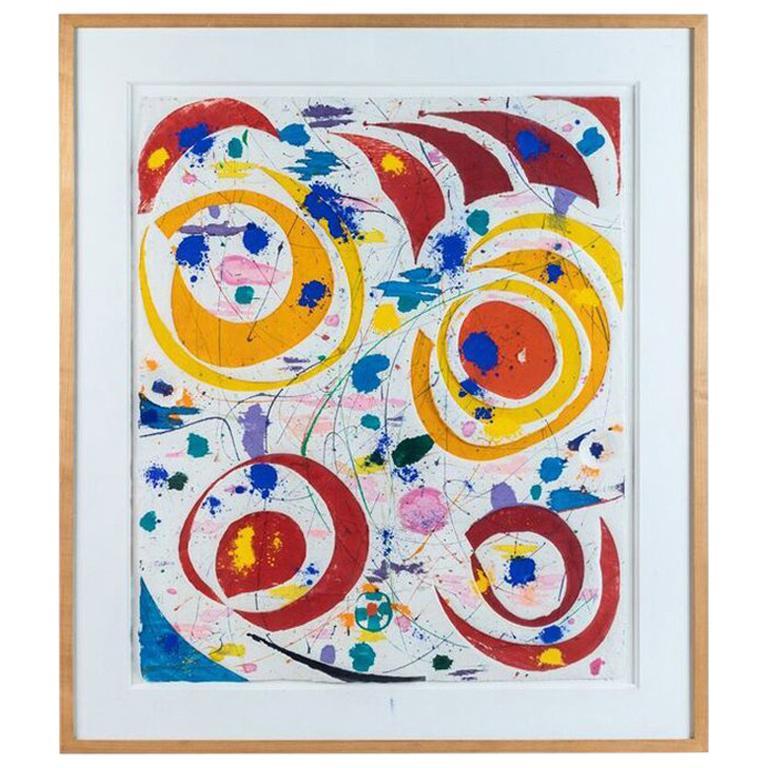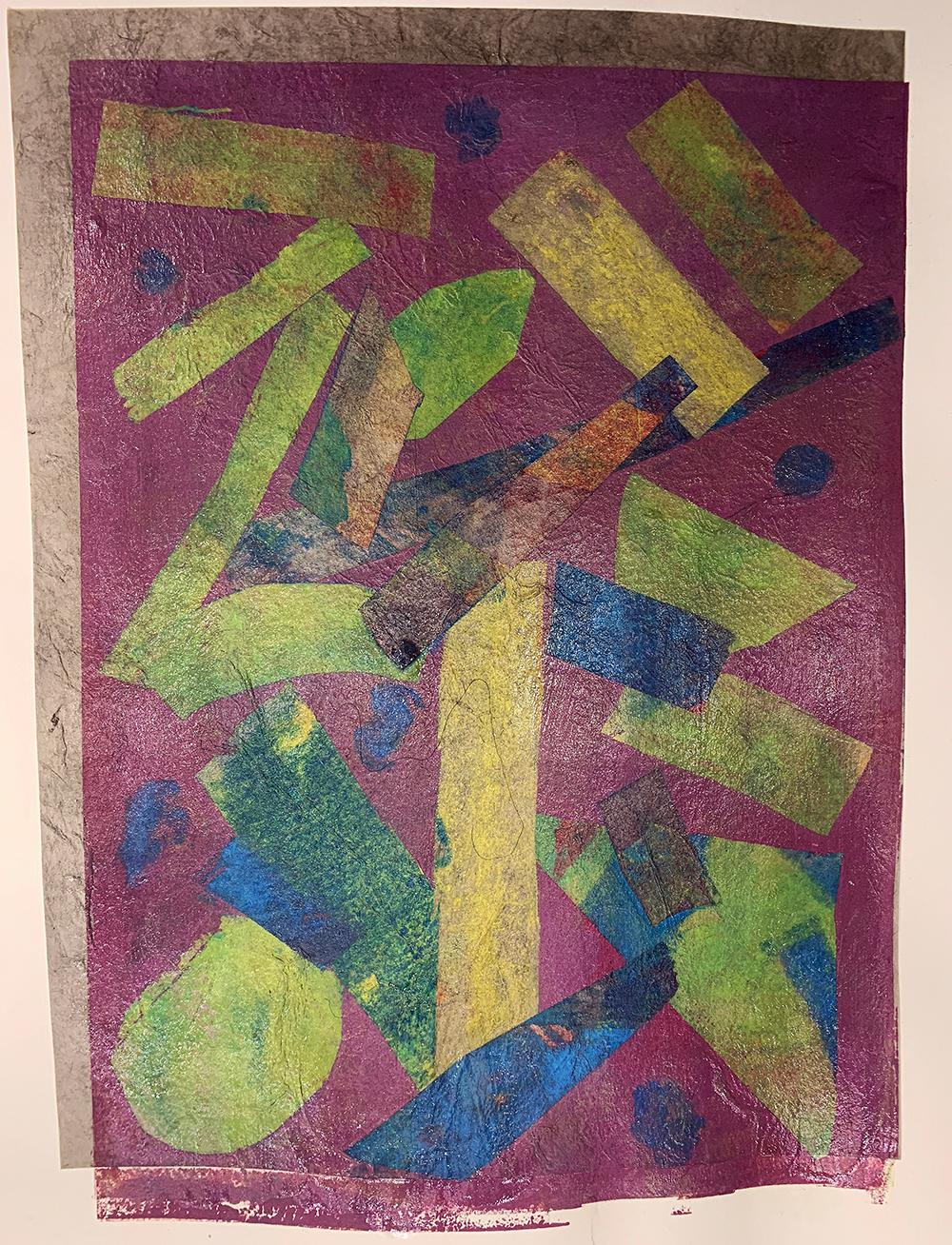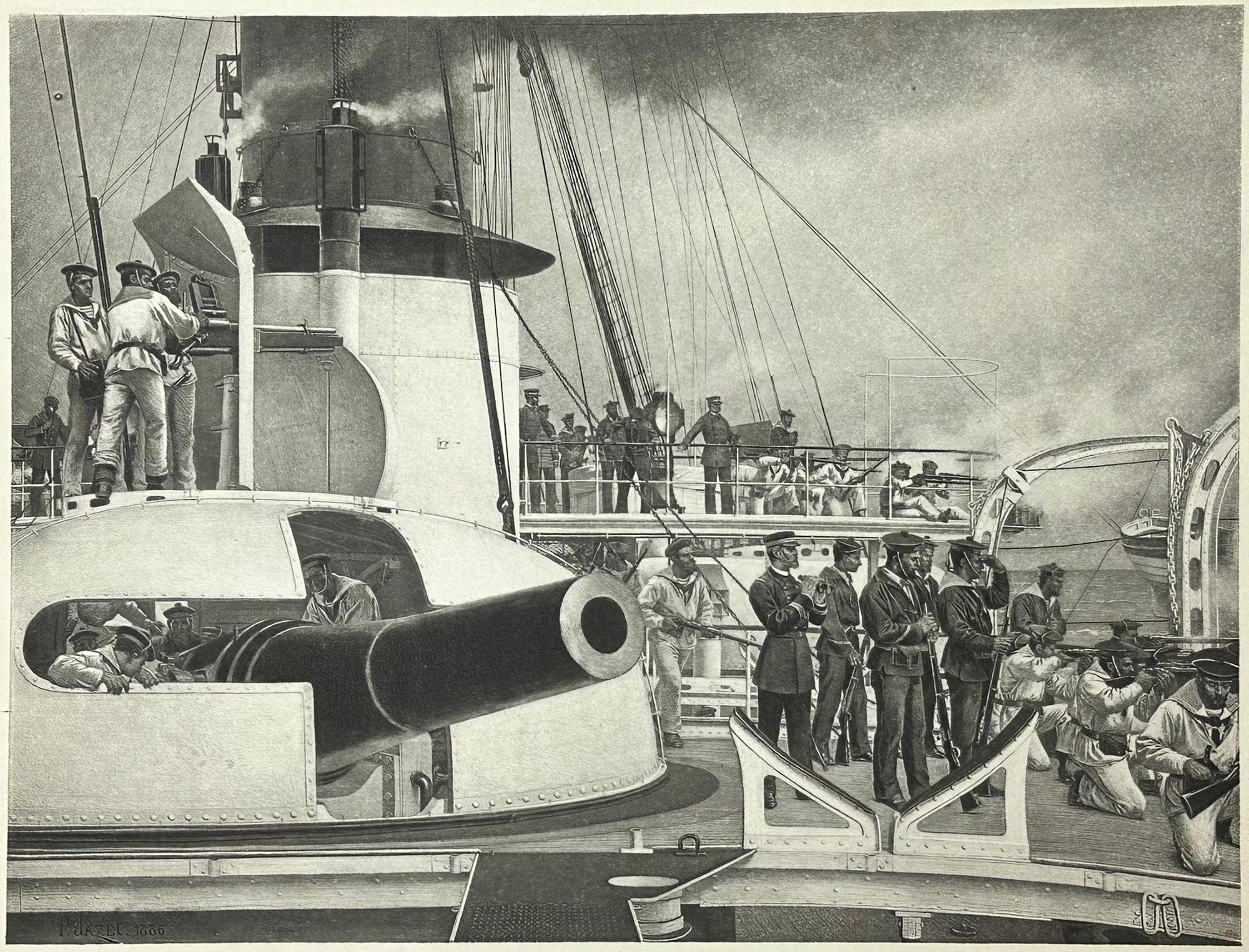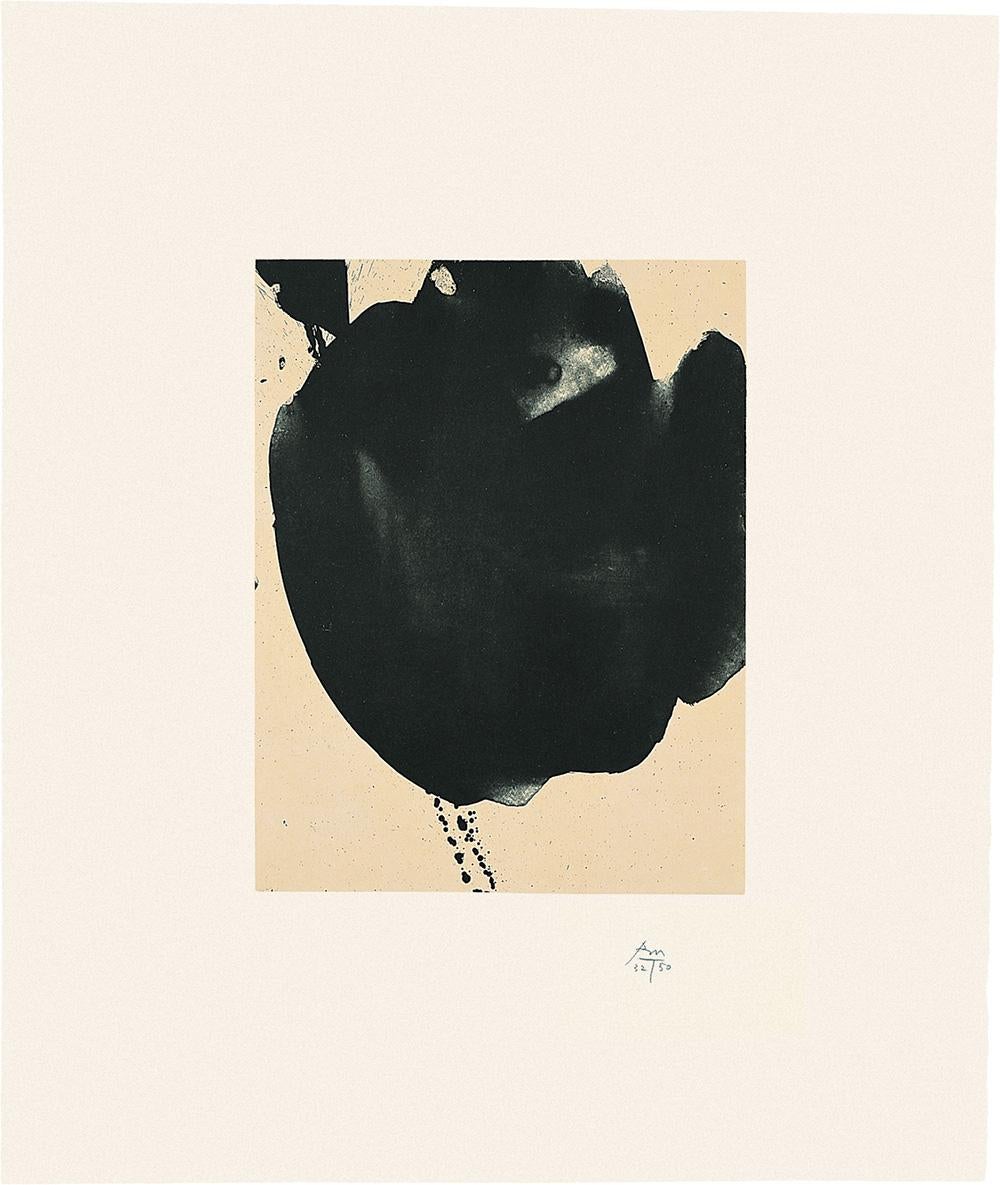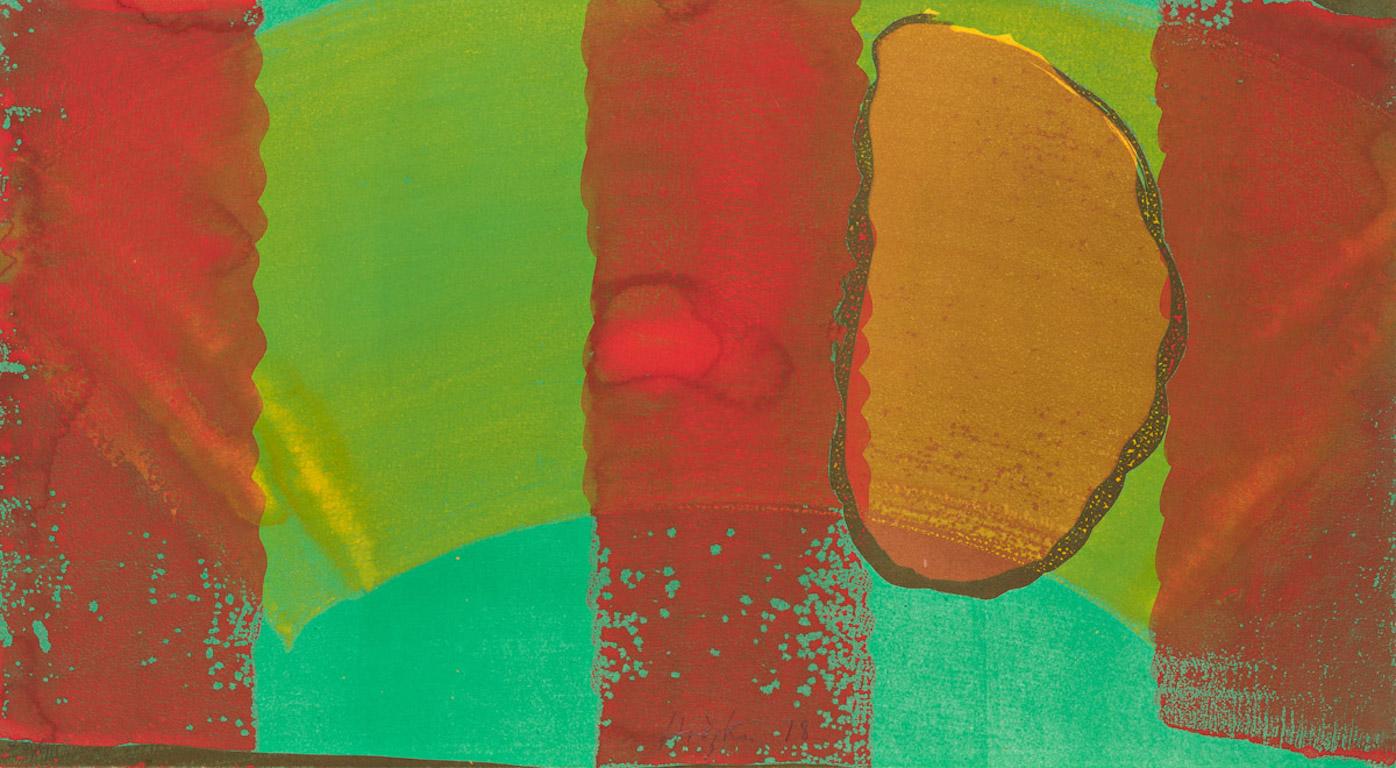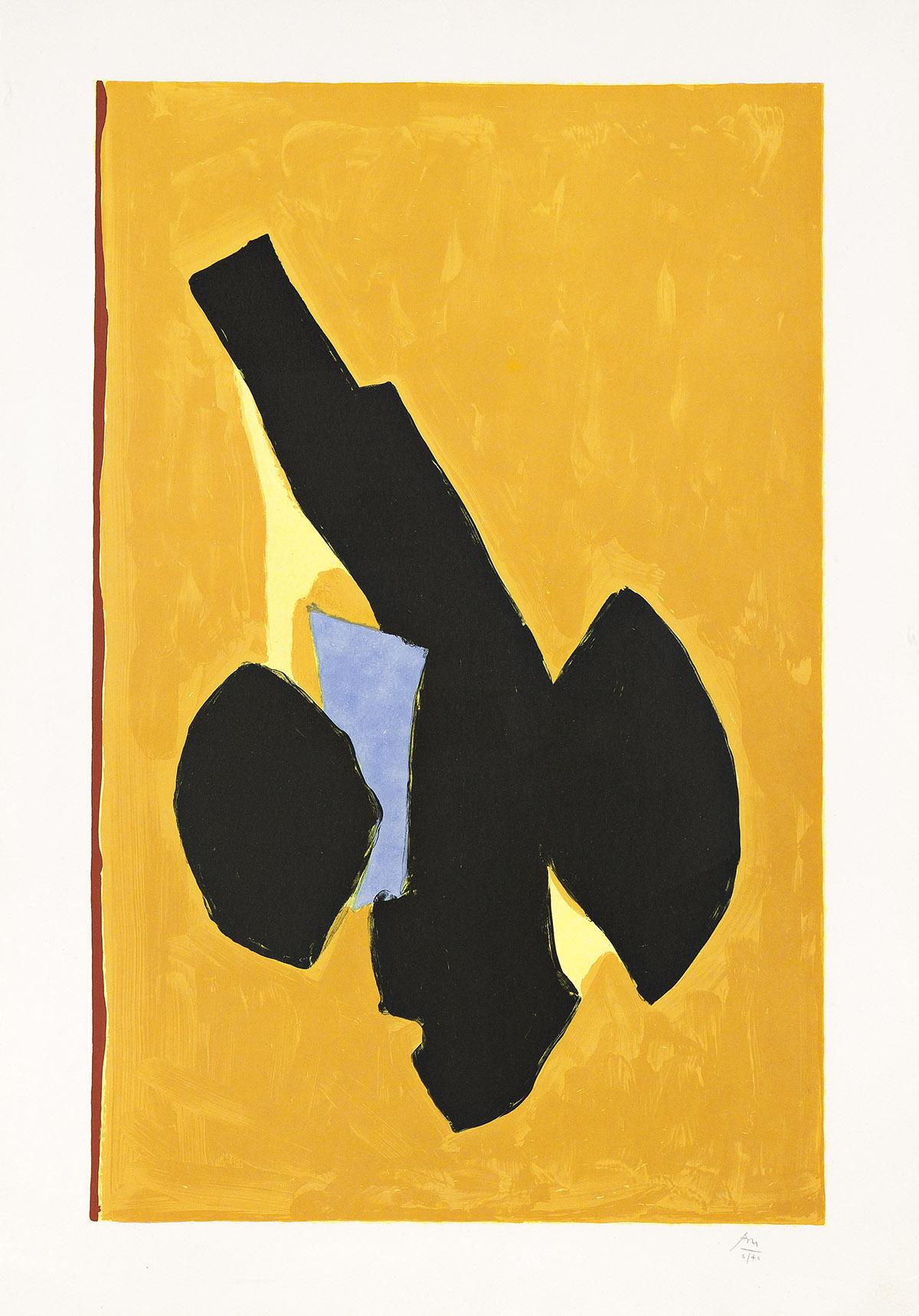Items Similar to Counterpoint Gothic VI
Want more images or videos?
Request additional images or videos from the seller
1 of 9
Donald FarnsworthCounterpoint Gothic VI1987
1987
About the Item
This work on paper is by Donald Farnsworth (1952-). It is titled Counterpoint Gothic VI. It measures 29.5 x 21 inches the sheet, 38.5 x 29.75 inches framed. It is hard to describe how this work was made because Farnsworth is an extraordinarily creative innovator in the fields of paper making, printing and a number of other areas. My best description is: color lithograph, monotype, chine colle using various hand made papers. This is a unique work. There may be other prints using the image of the arches, for example, but they will have different compositions of hand made paper. The work is signed and dated (1987) in the lower right in pencil. The work is framed in a light colored wood frame and Plexiglas. Because the print does not have margins “full bleed) it is floated and has a thick mat around the edges. The work is in very good condition. The mat and frame are in good condition, with a very small bit of discoloration on edge of the lower bar of the frame.
Donald Farnsworth obtained his Bachelor of Fine Arts from the San Francisco Art Institute in 1974 and his Master of Arts from the University of California at Berkeley in 1977.
In addition to being a well-known artist, he is also the director of Magnolia Editions in Oakland, California, a former president of the World Print Council and currently sits on the board of The Graphic Art Council. Farnsworth’s work has been displayed throughout the United States and Japan.
Not only an accomplished print artist, he is known internationally as a master printmaker and papermaker, and an authority on the history and manufacture of handmade paper.
Farnsworth has also taught his craft widely. From 1979 to 1986 he was an Associate Professor at the California College of Arts and Crafts, in 1987 he was a Guest Associate Professor at UC Davis, and from 1988 to 1992 a Guest Associate Professor at UC Berkeley. Currently he teaches at the University of Hawaii.
While Farnsworth’s pieces are architectural in nature, he pushes the limits of architectural renderings with the addition of unusual textures and designs. Adding touches like a zig-zag woven pattern or Japanese characters to otherwise traditional columns and arches makes for a style that is like no other.
Farnsworth's artwork is represented in collections including: The Brooklyn Museum, Brooklyn, NY; The Loyola University Museum of Art, Chicago, IL; The National Museum of American Art, the Smithsonian American Art Museum and The Jane Voorhees Zimmerli Art Museum, Rutgers University, New Brunswick, N.J. His work has been exhibited at the Museum of Modern Art, the Brooklyn Museum of Art, the San Francisco Museum of Modern Art, and the American Craft Museum.
- Creator:Donald Farnsworth (1952)
- Creation Year:1987
- Dimensions:Height: 38.5 in (97.79 cm)Width: 29.75 in (75.57 cm)Depth: 1.5 in (3.81 cm)
- Medium:
- Movement & Style:
- Period:
- Condition:The work is in very good condition. The mat and frame are in good condition, with a very small bit of discoloration on edge of the lower bar of the frame.
- Gallery Location:San Francisco, CA
- Reference Number:
About the Seller
5.0
Platinum Seller
These expertly vetted sellers are 1stDibs' most experienced sellers and are rated highest by our customers.
Established in 1999
1stDibs seller since 2017
682 sales on 1stDibs
Typical response time: 1 hour
- ShippingRetrieving quote...Ships From: San Francisco, CA
- Return PolicyA return for this item may be initiated within 7 days of delivery.
More From This SellerView All
- TreesLocated in San Francisco, CAThis artwork "Trees " c.1990 in an original monotype on B.F.K Rives paper by American artist Kelly Detweiler. It is hand signed, titled and numbered 1/1 in pencil by the artist. The image size is 17.85 x 15.65 inches, sheet size is 24.25 x 22.25 inches. It is in excellent condition, the colors are fresh and bright, has never been framed. About the artist: Born in Twin Falls Idaho, his family immediately moved to Monte Vista, Colorado where he lived until age 12. Many of the idyllic memories of this childhood inform his imagination and enter into his work. Moving from a very small farming and ranching community, he was plunged into the crazed consumer culture of Southern California. He lived in La Mesa, California and watched as the entire face of America changed with Vietnam, rampant divorce, and then the summer of love. He attended Grossmont College and immersed himself in art. Seeking to escape the drug crazed beach culture, he set out for northern California. Kelly attended Cal State University at Hayward where he studied with Mel Ramos, Raymond Saunders, Harold Schlotzhauer, Misch Kohn, Kenji Nanao and Clayton Bailey...Category
Late 20th Century American Modern More Prints
MaterialsMonotype
- PopeyeLocated in San Francisco, CAThis artwork titled "Popeye" c.1990 in an original monotype on B.F.K Rives paper by American artist Kelly Detweiler. It is hand signed, titled and inscribed M.T in pencil by the artist. The image size is 23.5 x 17.5 inches, sheet size is 29.85 x 22.25 inches. It is in excellent condition, the colors are fresh and bright, has never been framed. About the artist: Born in Twin Falls Idaho, his family immediately moved to Monte Vista, Colorado where he lived until age 12. Many of the idyllic memories of this childhood inform his imagination and enter into his work. Moving from a very small farming and ranching community, he was plunged into the crazed consumer culture of Southern California. He lived in La Mesa, California and watched as the entire face of America changed with Vietnam, rampant divorce, and then the summer of love. He attended Grossmont College and immersed himself in art. Seeking to escape the drug crazed beach culture, he set out for northern California. Kelly attended Cal State University at Hayward where he studied with Mel Ramos, Raymond Saunders, Harold Schlotzhauer, Misch Kohn, Kenji Nanao and Clayton Bailey...Category
Late 20th Century American Modern More Prints
MaterialsMonotype
- ConcentrationBy Georges Hugh De GroatLocated in San Francisco, CAThis artwork titled "Concentration" c.1970 is an original color monotype on paper by American artist Georges Hugh De Groat, 1917-1995. It is hand signed and titled in pencil by the artist.. The image size is 17 x 9.5 inches, framed size is 26.25 x 19.5 inches. Custom framed in a wooden grey frame, with light grey matting. It is in excellent condition. About the artist: George De Groat...Category
Mid-20th Century American Modern More Prints
MaterialsMonotype
- Five ChildrenBy Giovanni VetereLocated in San Francisco, CAArtist: Giovani Vetere (Italian, born 1940) Title: Five Children Year: Circa 1980 Medium: Color lithograph Edition: Inscribed E.A (Epreuve d'Artis...Category
Late 20th Century Modern More Prints
MaterialsLithograph
- "Mujer Con Sombrero" Large lithographBy Rufino TamayoLocated in San Francisco, CAThis artwork titled "Mujer Con Sombrero (Woman with Hat)" 1972 is a large original colors lithograph on Arches paper by renown Mexican artist Rufino Tamayo, 1899-1991. It is hand signed and numbered 81/100. in pencil by the artist. The artwork size 36.35 x 25.85 inches, sheet size is 37.25 x 26.25 inches, framed size is 52.25 x 40.5 inches. Published by Transworld Art, New York , Printed by Bank Street Atelier, New York. Referenced and pictured in the artist's catalogue raisonne by Pereda, plate #132 page 123. Custom framed in a wooden black and silver frame, with silver bevel and fabric matting. It is in excellent condition. Will provide the buyer with a certificate of authenticity from our gallery and photocopy of the pages related to this artwork from the artist's catalogue raisone. About the artist: A native of Oaxaca in Southern Mexico, Rufino Tamayo's father was a shoemaker, and his mother a seamstress. Some accounts state that he was descended from Zapotec Indians, but he was actually 'mestizo' - of mixed indigenous/European ancestry. (Santa Barbara Museum of Art). He began painting at age 11. Orphaned at the age of 12, Tamayo moved to Mexico City, where he was raised by his maternal aunt who owned a wholesale fruit business. In 1917, he entered the San Carlos Academy of Fine Arts, but left soon after to pursue independent study. Four years later, Tamayo was appointed the head designer of the department of ethnographic drawings at the National Museum of Archaeology in Mexico City. There he was surrounded by pre-Colombian objects, an aesthetic inspiration that would play a pivotal role in his life. In his own work, Tamayo integrated the forms and tones of pre-Columbian ceramics into his early still lives and portraits of Mexican men and women. In the early 1920s he also taught art classes in Mexico City's public schools. Despite his involvement in Mexican history, he did not subscribe to the idea of art as nationalistic propaganda. Modern Mexican art at that time was dominated by 'The Three Great Ones' : Diego Rivera, Jose Clemente Orozco, and David Alfaro Siqueros, but Tamayo began to be noted as someone 'new' and different' for his blending of the aesthetics of post Revolutionary Mexico with the vanguard artists of Europe and the United States. After the Mexican Revolution, he focused on creating his own identity in his work, expressing what he thought was the traditional Mexico, and refusing to follow the political trends of his contemporary artists. This caused some to see him as a 'traitor' to the political cause, and he felt it difficult to freely express himself in his art. As a result, he decided to leave Mexico in 1926 and move to New York, along with his friend, the composer Carlos Chavez. The first exhibition of Tamayo's work in the United States was held at the Weyhe Gallery, New York, in that same year. The show was successful, and Tamayo was praised for his 'authentic' status as a Mexican of 'indigenous heritage', and for his internationally appealing Modernist aesthetic. (Santa Barbara Museum of Art). Throughout the late thirties and early forties New York's Valentine Gallery gave him shows. For nine years, beginning in 1938, he taught at the Dalton School in New York. In 1929, some health problems led him to return to Mexico for treatment. While there he took a series of teaching jobs. During this period he became romantically involved with the artist Maria Izquierdo...Category
Mid-20th Century Modern Figurative Prints
MaterialsLithograph
- Mascara RojaBy Rufino TamayoLocated in San Francisco, CAThis artwork titled "Mascara Roja" 1969 is an original colors lithograph on B.F.K. Rives paper by renown Mexican artist Rufino Tamayo, 1899-1991. It is hand signed and inscribed H.C. (Hors Commerce) in pencil by the artist. The image size is 21 x 27.25 inches, framed size is 37.25 x 42 inches. Published by Touchtone Publisher, New York, printed by Ateliers Desjobert, Paris. Referenced and pictured in the artist's catalogue raisonne by Pereda, plate #124. Custom framed in a wooden gold leaf frame, with gold and red spacer and fabric matting. It is in excellent condition. About the artist: A native of Oaxaca in Southern Mexico, Rufino Tamayo's father was a shoemaker, and his mother a seamstress. Some accounts state that he was descended from Zapotec Indians, but he was actually 'mestizo' - of mixed indigenous/European ancestry. (Santa Barbara Museum of Art). He began painting at age 11. Orphaned at the age of 12, Tamayo moved to Mexico City, where he was raised by his maternal aunt who owned a wholesale fruit business. In 1917, he entered the San Carlos Academy of Fine Arts, but left soon after to pursue independent study. Four years later, Tamayo was appointed the head designer of the department of ethnographic drawings at the National Museum of Archaeology in Mexico City. There he was surrounded by pre-Colombian objects, an aesthetic inspiration that would play a pivotal role in his life. In his own work, Tamayo integrated the forms and tones of pre-Columbian ceramics into his early still lives and portraits of Mexican men and women. In the early 1920s he also taught art classes in Mexico City's public schools. Despite his involvement in Mexican history, he did not subscribe to the idea of art as nationalistic propaganda. Modern Mexican art at that time was dominated by 'The Three Great Ones' : Diego Rivera, Jose Clemente Orozco, and David Alfaro Siqueros, but Tamayo began to be noted as someone 'new' and different' for his blending of the aesthetics of post Revolutionary Mexico with the vanguard artists of Europe and the United States. After the Mexican Revolution, he focused on creating his own identity in his work, expressing what he thought was the traditional Mexico, and refusing to follow the political trends of his contemporary artists. This caused some to see him as a 'traitor' to the political cause, and he felt it difficult to freely express himself in his art. As a result, he decided to leave Mexico in 1926 and move to New York, along with his friend, the composer Carlos Chavez. The first exhibition of Tamayo's work in the United States was held at the Weyhe Gallery, New York, in that same year. The show was successful, and Tamayo was praised for his 'authentic' status as a Mexican of 'indigenous heritage', and for his internationally appealing Modernist aesthetic. (Santa Barbara Museum of Art). Throughout the late thirties and early forties New York's Valentine Gallery gave him shows. For nine years, beginning in 1938, he taught at the Dalton School in New York. In 1929, some health problems led him to return to Mexico for treatment. While there he took a series of teaching jobs. During this period he became romantically involved with the artist Maria Izquierdo...Category
Mid-20th Century Modern Figurative Prints
MaterialsLithograph
You May Also Like
- Untitled, 1981, Sam Francis MonotypeBy Sam FrancisLocated in Newport Beach, CAUntitled, 1981, unique embossed monotype print on handmade paper. Created at the Institute of Experimental Printmaking by lauded American artist, Sam Francis (1923-1994). The Sam Fra...Category
1980s More Prints
MaterialsInk, Oil, Watercolor, Handmade Paper, Pigment, Monotype
- Intuition, Abstract Work on Paper, Emerging ArtBy a.museLocated in New york, NYIntuition, 2019 by a.muse is on the subject of listening to your heart and following it. A one-of-a-kind chine-colle monotype, hand-pulled on the etching press by the artist, is an a...Category
2010s Abstract Abstract Prints
MaterialsRag Paper, Monotype, Handmade Paper
- Deck of a Man o' War / Le Vauban (cuirassé)By Paul Leon JazetLocated in Middletown, NYLithograph on Les Lettres et les Arts watermarked cream wove paper with deckle edges, 8 3/4 x 10 1/2 inches (220 x 265 mm), full margins. Signed, titled, and numbered 34/52 in penci...Category
Late 19th Century French School Figurative Prints
MaterialsHandmade Paper, Lithograph
- Octavio Paz Suite: Nocturne VIBy Robert MotherwellLocated in London, GBLithograph and chine appliqué 64.5 x 54 cms (25 3/8 x 21 1/4 ins) Edition 50 Paper: Arches paper; Japanese Gampi handmade paper Other Collaborators: Image transferred from Mylar to...Category
1980s Abstract Expressionist Abstract Prints
MaterialsHandmade Paper, Color, Lithograph
- Alexander StreetBy Howard HodgkinLocated in New York, NYA superb impression of this color lithograph with hand coloring in watercolor and gouache on Velin Arches mould-made paper. Signed, dated and numbered 88/90 in pencil by Hodgkin. Pri...Category
1970s Abstract Abstract Prints
MaterialsWatercolor, Gouache, Handmade Paper, Color, Lithograph
- DelosBy Robert MotherwellLocated in New York, NYA very good impression of this color lithograph on TGL handmade paper. Initialed and numbered 6/40 in pencil. Printed and published by Tyler Graphics, Ltd., Mount Kisco, with the bli...Category
1990s Abstract Expressionist Abstract Prints
MaterialsHandmade Paper, Color, Lithograph
Recently Viewed
View AllMore Ways To Browse
New Gothic
Gothic Fine
Donald Wood
Gothic Bar
Gothic Vintage Art
Retro Hawaii Prints
Retro Hawaiian Prints
Retro Hawaiian Print
Vintage Bar Chicago
Vintage Hawaiian Art Prints
Composition Vi
Vintage Architectural Rendering
Vintage Architectural Renderings
Magnolia Vintage
Magnolias Vintage
Hawaii Lithograph
Vintage Hawaiian Wood Signs
Brunswick Bar
